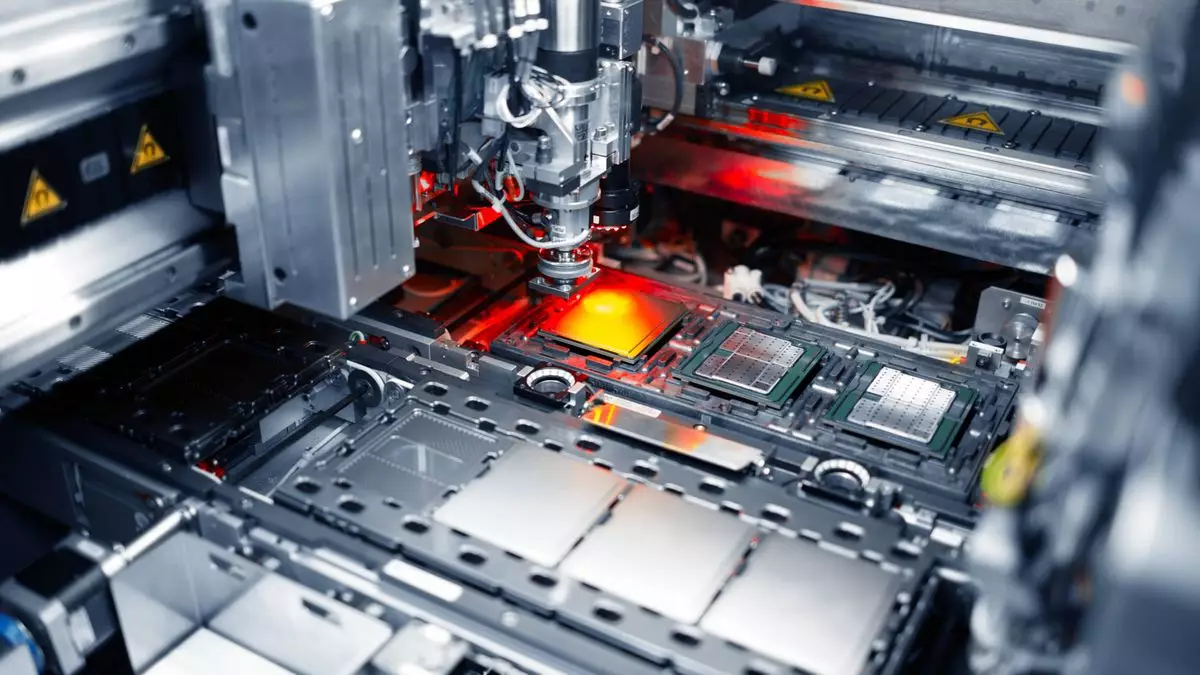In a rapidly shifting landscape characterized by intense competition in the semiconductor industry, the latest developments involving Intel and TSMC (Taiwan Semiconductor Manufacturing Company) have sparked both intrigue and concern. Recent reports suggest that TSMC is exploring the idea of a joint venture with major players like Nvidia, AMD, and Broadcom aimed at assuming control over Intel’s beleaguered manufacturing facilities. This succession of events not only highlights the fragility of Intel’s position but also raises questions about the trajectory of semiconductor manufacturing in the U.S. and abroad. Silicon Valley’s giants may be looking to bolster their stakes in a sector that is crucial to technological advancements but fraught with unprecedented challenges.
Just weeks prior to this new proposal, speculation identified a potential collaboration whereby TSMC would operate Intel’s foundries through a shared entity, with Intel retaining a significant role. However, conflicting narratives quickly emerged, highlighting the uncertainty pervading Intel’s future. The reality is complicated; the ephemeral nature of such negotiations puts Intel’s manufacturing capabilities in a precarious spotlight. TSMC’s envisioned approach, which includes a balancing act to comply with U.S. policy constraints regarding foreign ownership, indicates the overarching tension between protecting national interests and tapping into global technological strengths.
Intel’s Plummeting Market Position
The gravity of Intel’s predicament cannot be overstated. Following an alarming forecast of an $18.8 billion loss for the fiscal year 2024, the company’s strategic decisions are under intense scrutiny. The recent ousting of its CEO—promoted as the key to resuscitating the company’s beleaguered fortunes—only thickens the fog of uncertainty. The semiconductor giant has long been considered a cornerstone of American technology. Its current challenges reflect not only internal issues but also a rapidly evolving market dominated by agile competitors.
The implication of such potential ownership changes raises fundamental questions about intellectual property and technological leadership. Should TSMC and its partners gain control over Intel’s manufacturing facilities, questions surrounding U.S. technological autonomy emerge. TSMC’s proposed model reportedly aims for a partnership where it assumes operational control while allowing for joint ownership, specifically capping its stake at 50%. This maneuver appears to hedge against any resistance from U.S. policymakers who view the loss of control over a key industry as a significant risk.
The Role of Government in Corporate Strategy
In an industry where geopolitical considerations increasingly overlap with corporate strategies, the alleged involvement of the Trump administration in these negotiations adds another layer of complexity and intrigue. Sources have suggested that governmental influence is actively channeled toward revitalizing Intel as a symbol of American technological prowess. This could indicate broader policy implications that extend beyond corporate maneuvering, potentially affecting international relations and trade agreements within the semiconductor supply chain.
However, the ambiguity surrounding government involvement also highlights the need for companies to strategically navigate political landscapes. Firmly grasping the reins of technology requires agility not only in production capabilities but also in public relations and diplomacy. The successful coalition of TSMC, Nvidia, AMD, and Broadcom would represent a significant shift in the balance of power, redefining how semiconductor competitiveness is negotiated on the world stage.
Intel’s Future and the Stakes of 18A
At the crux of this narrative lies Intel’s ambitious 18A node technology, touted as a breakthrough in manufacturing capability and efficiency. The importance of this development cannot be understated; successful delivery and performance of the 18A chips could reinvigorate Intel’s competitive standing. Conversely, further delays or performance setbacks could compel the company to consider more drastic measures, including a potential stake reduction or divestment of its wafer fabrication facilities.
The challenge, therefore, is not just about technology itself but navigating the myriad external pressures that influence its introduction to the market. The fate of Intel feels as if it’s balanced precariously, yet the stakes are higher than they have been for years as the industry bears witness to a tug-of-war between preserving legacy assets and embracing an uncertain future.
As we sit on the edge of unprecedented changes within the semiconductor industry, one can only hope that clarity comes sooner rather than later, for the stakes are immensely high—not only for Intel but also for the technological landscape that underpins much of modern life. Whether this chapter in Intel’s saga resolves with fortification or fragmentation remains a critical point of interest for industry observers and stakeholders alike.

